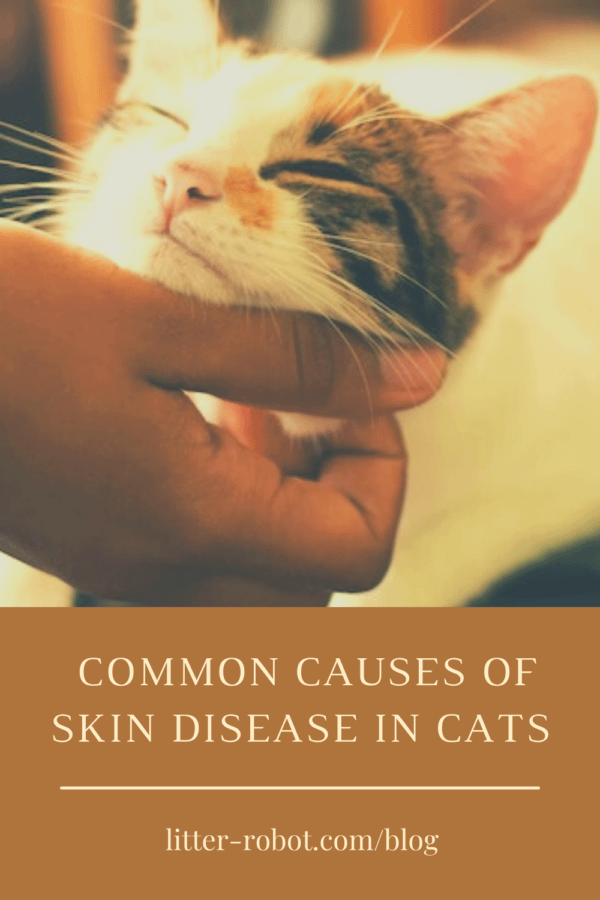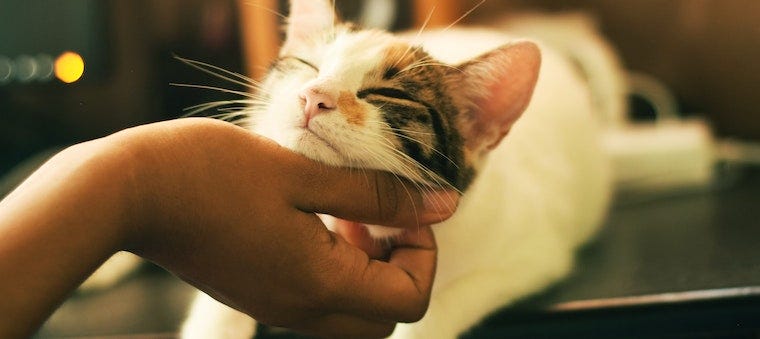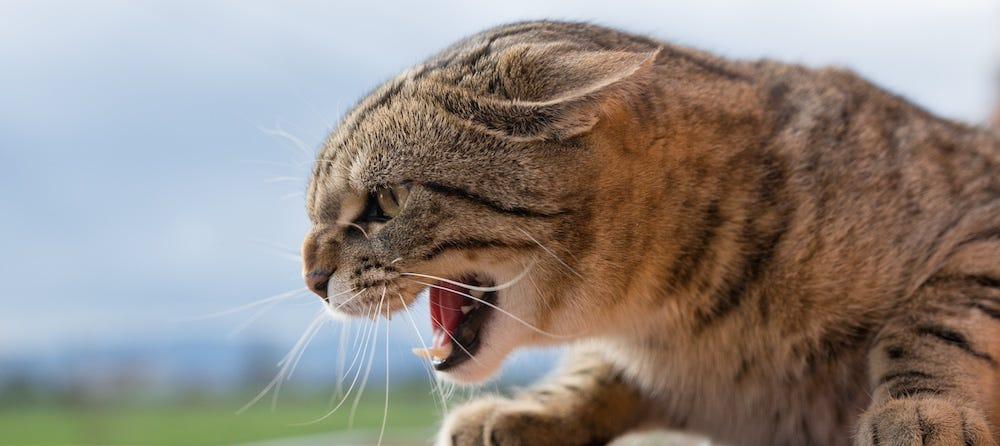If you notice your cat losing their fur, read on! While allergies and skin disease in cats aren’t quite as commonly seen as they are in dogs, cats can still be afflicted.
The skin is officially the largest organ in the cat’s body and acts as a protective, temperature-regulating layer against all the elements in nature. Plus, the fur makes our feline family members extra cuddly and soft. But before you rub your face all over your cat’s fur, here’s what you need to know about skin disease and the potential spread of infection to you!
What are signs of skin disease in cats?
Recognizing signs of skin disease in cats is important, as it’s going to look a lot different from dog skin disease. Dogs with skin disease will lick their paws constantly, slurp at their belly, stink more (why we love cats!), and scratch at their ears. But these signs of skin disease aren’t as obvious in cats!
Signs of skin disease in cats may include:
- Losing hair, especially on the belly and thighs
- Excessive grooming, licking, or chewing at fur
- Excessive scratching
- Bumps or “pimples” on the skin
- Flaky or scaly fur
- Scabs on the skin or fur
- Swelling, thickening, or redness (inflammation) of the skin
- Abnormal odor of the fur
What causes skin disease in cats?
There are numerous causes for skin disease in cats, including:
- Fleas
- Fungal infections (e.g., ringworm)
- Mites
- Insect bites (e.g., mosquitos, biting flies, etc.)
- Environmental or seasonal allergies
- Secondary bacterial or yeast infections
- Skin infections (e.g., abscesses from fighting with other cats)
- Food allergies
- Allergic reactions
- Certain prescription medications causing a rare adverse effect (e.g., methimazole or thyroid medication, anti-seizure medications, etc.)
- Skin cancer (less common)
- Viral infections (rare)
Depending on the underlying cause of skin disease, certain types are seen in younger versus older cats. In young cats—especially those recently adopted from animal shelters, catteries, or farms—certain infectious causes such as ringworm, parasites, or even mites are more common. Thankfully, these are all treatable, but are more prevalent because of the community living setting where cats are more closely housed together. In adult to older cats, I’m more worried about underlying food allergies or environmental allergens causing skin disease.
Regardless of the cause, skin disease in cats should be treated immediately by your veterinarian to prevent health problems, discomfort and pain to your cat, spread to other cats in the household, or even zoonotic spread to you. (Yes, something like ringworm can spread to you and the entire household!)
How do you diagnose skin disease in cats?
Your veterinarian will need to figure out what is causing the skin disease in your cat. This may include a thorough history, physical examination, or even consultation with a board-certified veterinary dermatologist! Other methods of diagnosis may include:
- Microscopic skin analysis (e.g., cytology)
- Skin culture (e.g., for ringworm)
- Dietary trial
- Medical trial
- Change in environment
- Skin testing
- Surgical biopsies
To start the work-up for skin disease, your veterinarian will begin with a history, asking if there are any new cats in the environment, any medications started, flea/tick medication, recent diet changes, indoor/outdoor status, etc. Your veterinarian will ask about what clinical signs your cat is showing, such as the location of hair loss, licking, vomiting, diarrhea, and more. Depending on the age of your cat, your veterinarian may do certain tests over others. For example, in a younger cat, I’m more likely to start with a fungal culture for ringworm or skin scrape for cytology. In an adult to older cat, I’m more likely to run a series of tests to rule out food allergies or environmental allergens.
What’s the treatment for skin disease in cats?
The treatment for skin disease in cats typically depends on the underlying cause. Treatment with flea/tick medication is the easiest place to start. Even if your cat is indoor (but you have a dog that goes outside), you want to keep your cat on preventative flea medication. That’s because once you have a flea infestation in the house, it is very difficult to get rid of it! (NOTE: You should never use flea preventative medicine meant for a dog on a cat—that can be poisonous!)
Next, your veterinarian may routinely treat your cat with a parasiticide (which kills parasites like mites, etc.) like ivermectin. Sometimes a course of antibiotics or a short course of anti-inflammatory or anti-itch medications may be necessary. As for ringworm infections, we don’t typically start antifungal medications (e.g., itraconazole, fluconazole, etc.) until we have confirmation based on culture (or other tests). That’s because the antifungal medication can be expensive and has rare potential side effects. (Routine blood work monitoring of liver enzymes is also needed while on antifungal medication.)
As my own cat has severe food allergies, I had to test her with a short-term (12-week course) hypoallergenic diet trial. I gradually got her used to eating this food over a few weeks, and then eventually transitioned her 100% to just this hypoallergenic diet. This means absolutely no treats, catnip, or anything else going through her mouth for a few weeks! For my cat, her clinical signs of excessive licking and baldness on her belly and thighs resolved quickly, indicating her skin disease was from a severe food allergy.
What’s the prognosis for skin disease in cats?
Thankfully, the prognosis for skin disease in cats is generally good! That said, untreated, it can result in hair loss, excessive grooming, secondary infections, discomfort, and even pain.
If you notice anything unusual with your cat’s grooming habits, skin, or hair coat, it’s best to get to the vet immediately to be checked out. Please keep in mind that over-the-counter or even holistic essential oils can be very poisonous to a cat. Some at-home remedies can even make certain types of skin disease worse! When in doubt, keep your cat—and their fur—as healthy and happy as possible.
Photo by Yerlin Matu on Unsplash









